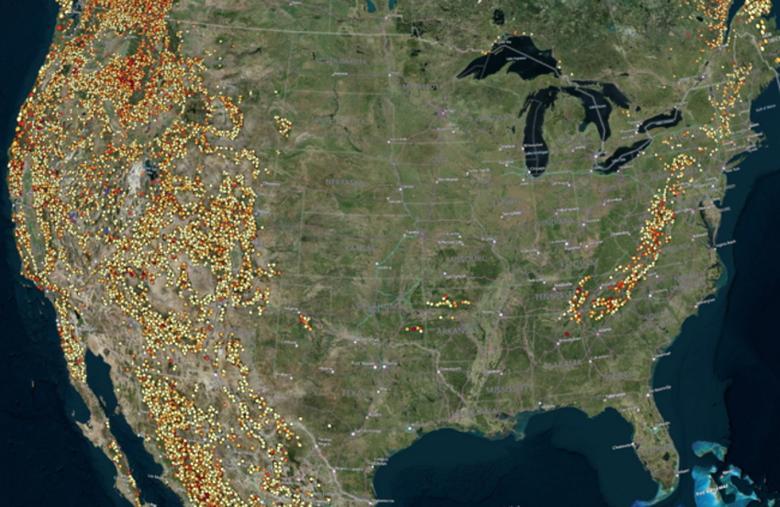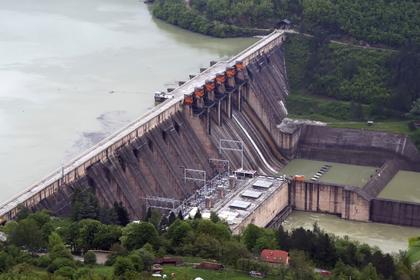
CHEAP RENEWABLE ENERGY STORAGE

By ANDREW BLAKERS Professor of Engineering Australian National university
ENERGYCENTRAL - May 12, 2021 - President Biden plans to halve greenhouse emissions by 2030. This requires lots more solar and wind generation, and lots of cheap energy storage. Fortunately, there is a vast, low-cost, off-the-shelf, environmentally benign storage solution, namely pumped hydro.
There is a twist: nearly all good pumped hydro sites are not on rivers - they are off-river sites, located away from any river.
Remarkably, pumped storage is virtually ignored in reports and analyses because people wrongly equate pumped hydro with new dams on rivers.
Pumped hydro energy storage constitutes 99% of global storage energy. However, river-based pumped hydro is constrained by geographical availability and opposition to new dams on rivers.
An off-river pumped hydro system comprises a pair of reservoirs located away from any river and spaced several kilometres apart with an altitude difference of 200-800 m and connected with pipes or tunnels. The reservoirs can be purpose-built or can utilise old mining sites or existing reservoirs. On sunny/windy days, water is pumped to the upper reservoir. At night-time, the water flows back down through the turbines to recover the stored energy.
A pair of 100-hectare reservoirs with an altitude difference of 600 metres and 20 metre depth can store 24 Gigawatt-hours of energy, which means that the system could operate at a power of 1 Gigawatt for 24 hours. This is enough storage for a city of a million people relying mostly on solar and wind.
Off-river pumped hydro means that new dams on rivers and bespoke engineering in remote river valleys are avoided. Also, minimal provision needs to be made for flood control. Very little land and water is required: about 3 m2 per person and 3 litres per person per day respectively (averaged over 50 years) to support a 100% renewable electricity system.
The global pumped hydro storage atlas lists 616,000 potential sites with an enormous 23 million Gigawatt-hours of combined storage. The Atlas allows you to view the 3-D shape of any one of the hypothetical reservoirs here. Zoom in to see the tunnel route and the dam walls. Click on tunnel or reservoir for detailed information pop-ups.
The USA has 35,000 good potential sites outside national parks with combined storage of 1.4 million Gigawatt-hours. About 1% of these are needed to support a 100% renewable electricity system, which allows utilities to pick and choose the best sites. The sunny and windy states in the south eastern Rockies have thousands of sites, which allows them to export steady 24/7 solar and wind electricity to other states.
Little pumped storage has been built in the USA in recent years because there wasn’t much need for storage. However, much more storage will be needed when solar and wind generate 50-100% of electricity.
Australia (with 8% of the US population) is installing solar and wind 3 times faster per capita than the USA and is facing up to the need for mass storage right now. It has three existing pumped hydro systems built several decades ago. Two pumped hydro systems are under construction (Snowy 2.0 and Kidston) with combined energy and power capacity of 350 GWh and 2.3 GW respectively. Construction time is 3-5 years. Another dozen are under serious consideration. None involve new dams on rivers. Several GW of 1-3 hour batteries are also being deployed.
Pumped hydro energy storage and batteries complement each other. Batteries are best for short term (minutes to hours) high-power storage, while pumped hydro is best for overnight and longer duration storage (which is essential for a solar/wind dominated system).
The capital cost of a Gigawatt-rated off-river pumped hydro storage system with 24 hours of storage in a good site is $1-2 billion for a system that has a working lifetime of 50-100 years, low operating costs and whose working fluid is water rather than electro chemicals.
As the US rapidly deploys solar and wind to reduce emissions, it has effectively unlimited options for no-new-dam, low-cost, off-river, pumped hydro storage.
-----
This thought leadership article was originally shared with Energy Central's Clean Power Community Group. The communities are a place where professionals in the power industry can share, learn and connect in a collaborative environment. Join the Clean Power Community today and learn from others who work in the industry.
-----
Earlier:












